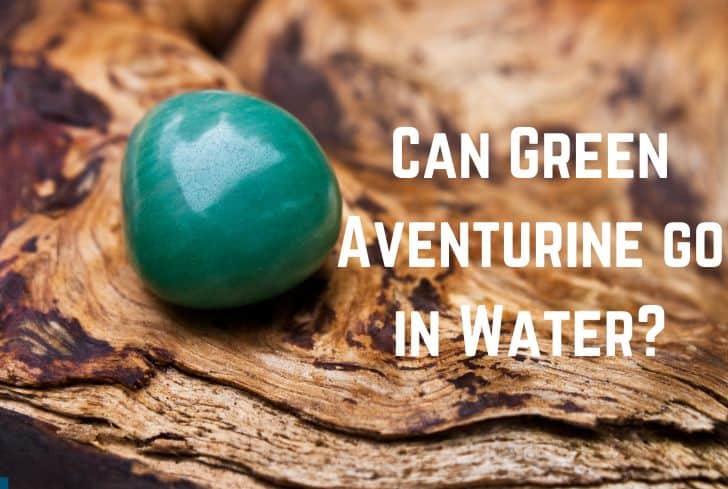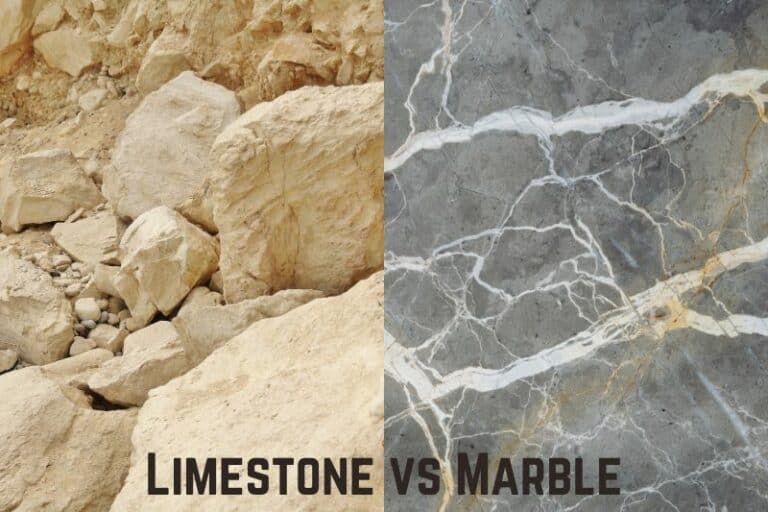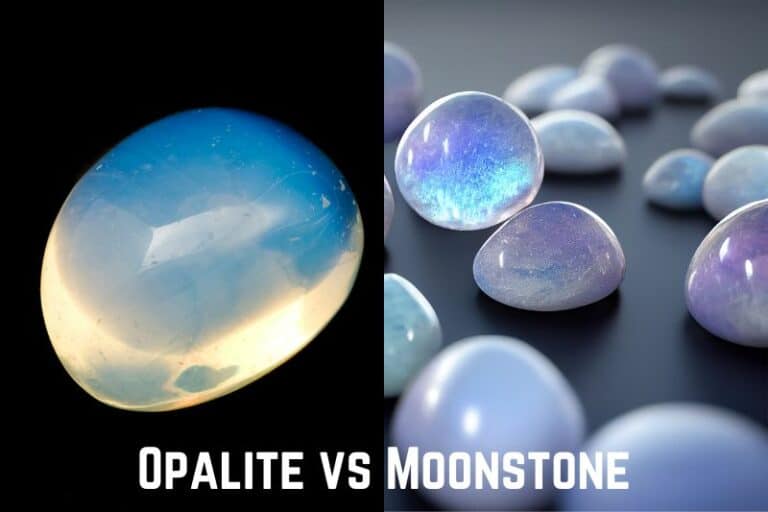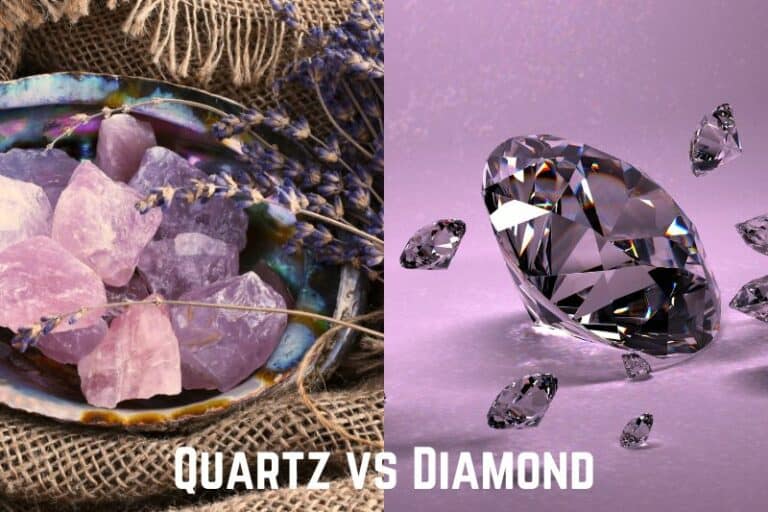Can Black Tourmaline Go in the Water? (And Salt Water?)
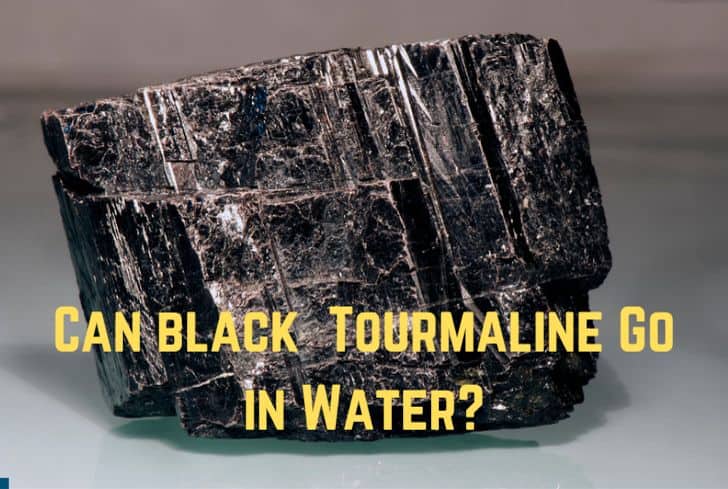
Tourmaline is a silicate mineral group in which boron is compounded with elements like aluminum, iron, magnesium, etc. It consists of several minerals with similar crystal structures and physical properties, but they vary significantly in chemical composition. Its name is derived from the Sinhalese term tōramalli, which refers to carnelian gemstones.
Have you ever wondered if black tourmaline can go in the water? In this article, we are going to discuss just that. We will begin with the properties of tourmaline. Then we will discuss its interaction with water, salt, and sunlight. We will talk about the gemstone’s distinguishing features, and learn how to take care of it.
Read: Can Larimar Go in the Water?
Is Black Tourmaline Water Safe?
Yes, black tourmaline is water safe. It has a value of 7 to 7.5 on the Mohs Hardness Scale, which is well above the minimum value required for minerals to be safe underwater. However, like all stones, it should not be immersed for too long as water can damage its structure and tarnish its appearance.
Mohs Hardness Scale is a measure of a mineral’s relative resistance to scratching. Besides that, it also indicates a mineral’s relationship to water. Usually, a value over 5.0 means that the stone is safe to be put into water.
While softer stones like selenite (value of 2.0) should never be immersed, even harder stones like black tourmaline should not be kept in water for long. Water enters the crevices of stones, expanding the cracks, and damaging the structure of the stone.
Water also tarnishes the appearance of the stone. It strips off the surface polish, making it look duller.
Properties of Black Tourmaline
These are the properties of tourmaline:
- Colour: The most common species of tourmaline is schorl, which is brownish-black to black due to the presence of iron. Tourmaline is available in a wide range of colours such as blue, green, yellow, etc.—almost covering the entire colour spectrum. Some tourmaline stones are also colour zoned, meaning that a single crystal contains two or more different colours. The most popular of these is the “watermelon” tourmaline.
- Structure: Tourmaline is a six-member ring cyclosilicate with a trigonal crystal system. Its crystals range from slender to thick prismatic and columnar ones, which are usually triangular in cross-section and often with curved faces. The termination at the ends of the crystals is sometimes asymmetrical and is known as hemimorphism. Tourmaline has an indistinct cleavage.
- Hardness: Tourmaline has a value of 7 to 7.5 on the Mohs Hardness Scale. This means that the stone is quite hard, which makes it ideal for jewellery and gemstones. It can also survive in the water. Besides being hard, tourmaline is also quite resistant to chemical weathering. Its particles can survive in water streams for a long time, travelling far from their source areas.
- Formation: Tourmaline is most commonly formed as an accessory mineral in igneous and metamorphic rocks. Large, well-formed crystals of tourmaline are formed by hydrothermal activity. Hot water and vapours carry the elements needed for tourmaline into voids and cavities, which provide an open space for the growth of the crystals. The largest source of tourmaline is Brazil, and other places in Africa and Asia also contribute.
- Optical Properties: Tourmaline is one of the several minerals that exhibit chatoyance when cut into a gem. A line of bright light is reflected from the surface of the stone due to the presence of thousands of tiny parallel tubes, which bounce the light. Tourmaline is also a pleochroic stone, meaning that its apparent color changes with different directions of observation. Check out this beautiful effect in this video by Gemgazer.
Besides these physical properties, tourmaline is also believed to have many spiritual properties. It is said to help mitigate emotional pain and get rid of the negative emotions that come from an upsetting relationship. Perhaps this is why it has been used as mourning jewelry since the Victorian age.
Can Black Tourmaline Go in Salt Water?
No, black tourmaline should not be put into salt water. The stone has a value of 7 to 7.5 on the Mohs Hardness Scale, meaning that it can survive underwater, but it should still not be immersed for long. When we bring salt into the mix, it makes the corrosive effect worse.
Salt, when dissolved in water, is able to enter the crevices of the stone. These particles stay here even after the water evaporates and they cause the cracks to widen. These fissures can slowly damage the structure of the stone, making it brittle.
Salt can also react adversely with the elements of the stone, especially those like tourmaline, which contains iron. Salt water hastens the rusting process by making iron lose its electrons more easily.

Can Black Tourmaline Go in the Sun?
Yes, black tourmaline can go in the sun. Keeping stones out in the sunlight is a common way of recharging them, and it is perfectly safe for tourmaline. Tourmaline has a value of 7 to 7.5 on the Mohs Hardness Scale, so it is quite a hard mineral that is safe both in water and sunlight.
One of the best ways of recharging your black tourmaline is by putting it out in the sunlight. You can leave the stone at a place that gets direct sunlight or on your windowsill, where the glass will act as a protective layer against UV rays.
You can also try leaving your stone out during the early morning hours when sunlight is gentle. Remember that even for resistant stones, prolonged exposure to either water or sunlight is not great. Black tourmaline is not affected by sunlight, but heat is harmful to the stone. So make sure you do not leave it out for too long.
Besides sunlight, you can also try other recharging methods, such as keeping the stone in moonlight, placing it in brown rice, or smudging it with sage.
Read: Can Shungite Go in the Water
Can Black Tourmaline be Heated?
No, it is not recommended to heat black tourmaline. Although tourmaline is quite resistant to chemicals, it can easily get damaged by heat. Heat can alter the color of the stone, and a sudden change in temperature can also cause fracturing.
Tourmaline has a lot of inclusions, and heat can cause them to expand. This can lead to fracturing or even shattering of the stone. This is why steam devices are not recommended for cleaning tourmaline.
Keep reading to find out how to clean tourmaline safely.
Is Black Tourmaline Magnetic?
Yes, black tourmaline is magnetic. The opaque black variant, also known as schorl, is considerably magnetic due to the high concentration of iron. Tourmaline is piezoelectric, and often pyroelectric too. This means that they generate electricity when put under pressure and heated respectively.
Because of its pyroelectric properties, tourmaline can attract and repel hot ashes, which is why it was also called “Ceylonese Sri Lankan Magnet”. Tourmaline stones also generate an electrostatic charge when rubbed.
The pyroelectric properties of tourmaline are also one of its identifying characteristics.
How Can You Tell if Black Tourmaline is Real?
Because of its beautiful range of colours, tourmaline is often imitated. This is especially the case with multicoloured variants such as watermelon tourmaline. These fake stones consist of a thin wafer of coloured glass or plastic, which is glued between colourless glass. These imitations can easily be identified with a microscope, as the edge of the glue line is usually visible along the girdle.
Examining the stone under a microscope is the best way to ascertain its authenticity. Besides that, you can also look for these identifying properties of tourmaline:
- Any stone with a visible cleavage is not tourmaline because it has an indistinct cleavage.
- Another distinguishing feature is Tourmaline’s three-sided prisms, which are often striated (having long, parallel streaks).
- Finally, you can identify tourmaline by its pleochroism.
How to Cleanse Black Tourmaline?
Follow these steps to clean black tourmaline:
- Mix soft detergent/soap with lukewarm water.
- Immerse tourmaline in the solution for a few minutes and clean it with a soft brush.
- Rinse the stone under running water ensuring that all the soap is removed.
- Let the stone air dry. Twist it a few times to remove all the water from the crevices.
Black tourmaline has a value of 7 to 7.5 on the Mohs Hardness Scale, so it can survive underwater. Moreover, its hardness is good enough to resist household dust. This is quite important as tourmaline attracts more dust due to its electrical conductivity.
Do not use ultrasonic devices or steam cleaners on tourmaline as it has numerous inclusions. Vibration and heat of these methods may cause the inclusions to expand, causing the stone to shatter. Instead, use the cleaning method discussed above, involving soap water.
Read: Can Black Obsidian Go in the Water?
Conclusion
In this article, we have discussed black tourmaline’s relationship with water. With a value of 7 to 7.5 on the Mohs Hardness Scale, black tourmaline is quite a hard mineral that is safe to go in water. We discussed tourmaline’s properties and how they help us figure out its authenticity. We then talked about the stone’s interaction with various materials and learnt how to care for it.

